Unit 1: Limits and Continuity
1/14
Earn XP
Description and Tags
Name | Mastery | Learn | Test | Matching | Spaced |
|---|
No study sessions yet.
15 Terms
Basic Limit Rules
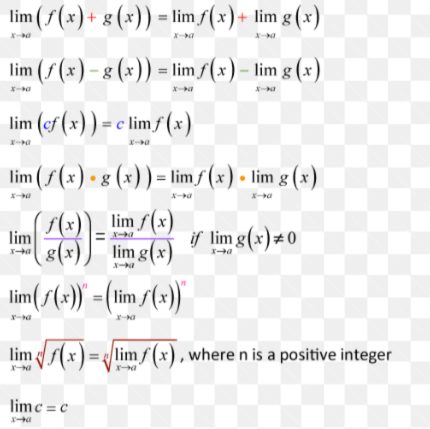
Limit Identities
lim(sinx/x)=1
limx→0(1-cosx/x)=0
limx→0(x/sinx)=1
limx→0(cosx-1/x)=0
Removable Discontinuities
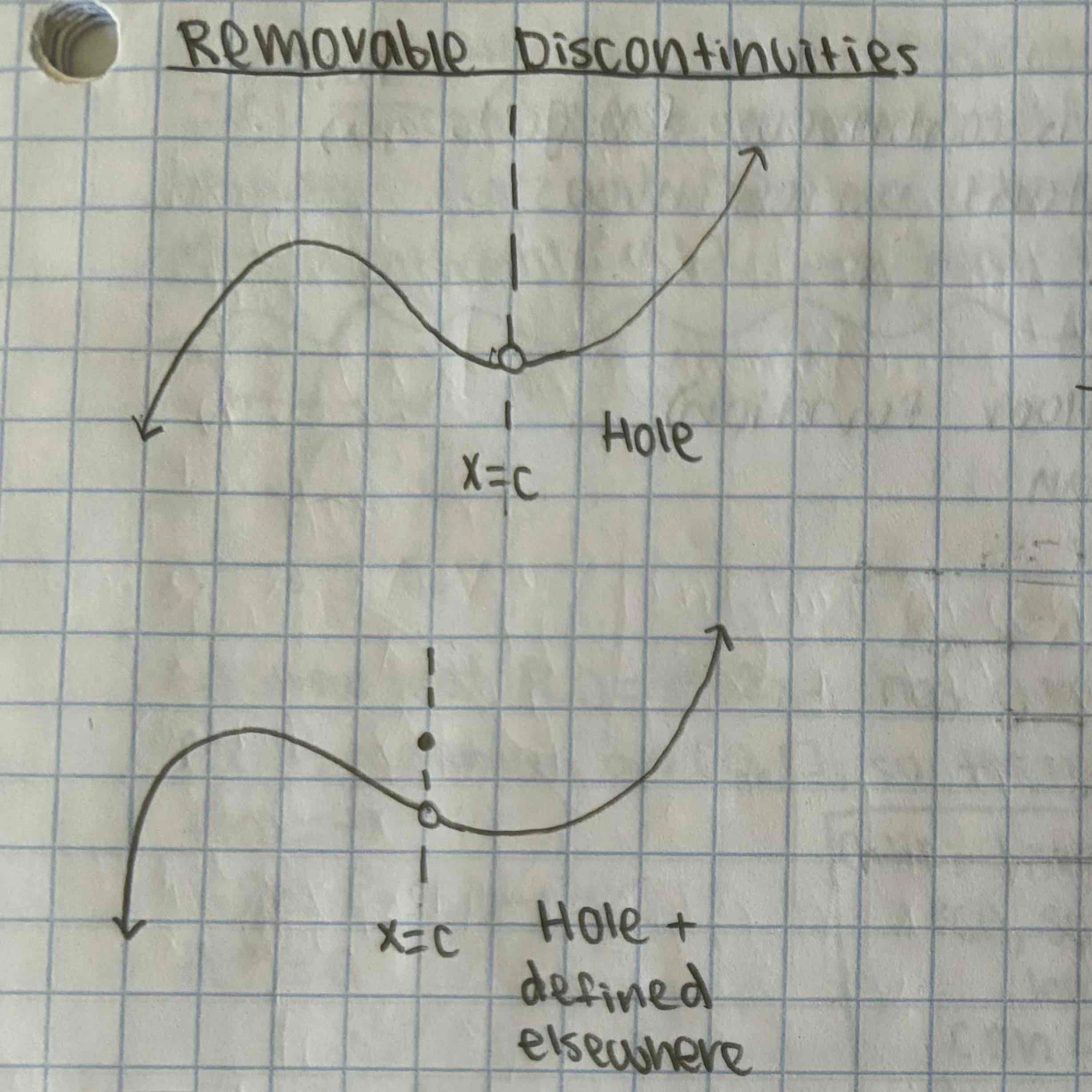
Non-Removable Discontinuities
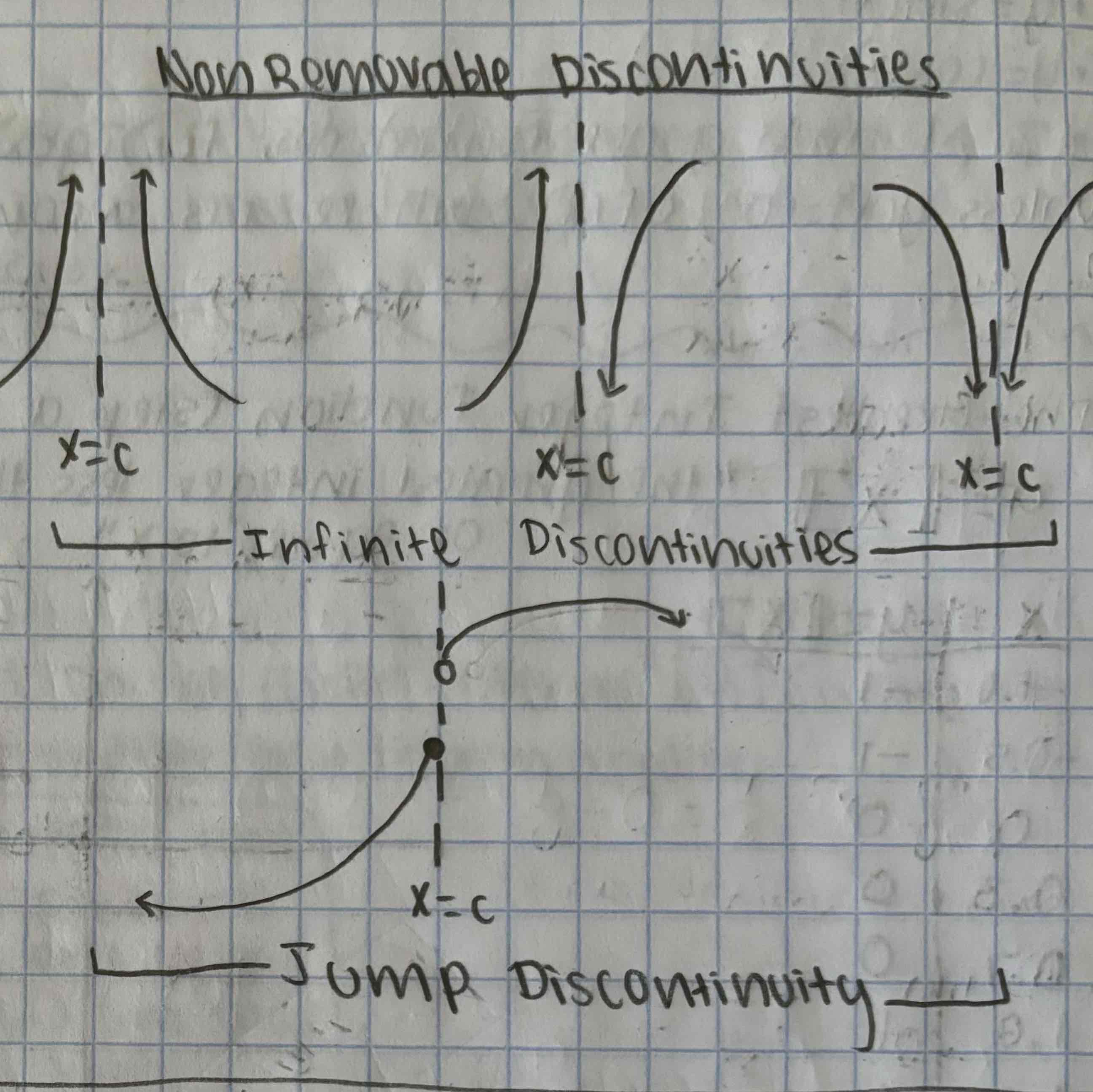
Continuity at a Point
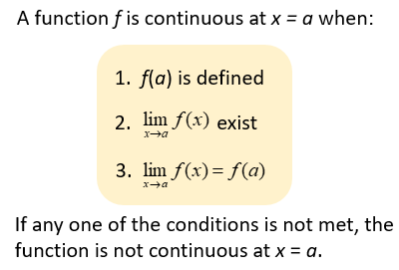
When can you assume a function is continuous?
The function is a polynomial
y = sin(x)
y = cos(x)
If f and g are continuous, f(x) ± g(x) is continuous, f(x) g(x) is continuous, f(x)/g(x) is continuous where g(x) does not equal 0, and c * f(x) is continuous where c is a constant
Vertical Asymptote
x=c is a vertical asymptote if the limx→c⁺ f(x) = ∞/-∞ and the limx→c⁻ f(x) = ∞/-∞
Horizontal Asymptote
y=b is a horizontal asymptote if the limx→∞/-∞ f(x) = b
Properties of Infinite Limits
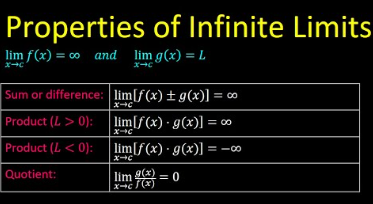
Squeeze Theorem
If f(x) ≤ g(x) ≤ h(x) for all x ̸= a and limx→a f(x) = limx→a h(x) = L, then
limx→a g(x) = L
When does a limit not exist?
f(x) approaches a different number from the right as it does from the left as x→c
f(x) increases or decreases without bound as x→c
f(x) oscillates between two fixed values as x→c
Horizontal Asymptote Rules
If top degree = bottom degree, divide leading coefficients
If top degree < bottom degree, ha is at y = 0
If top degree > bottom degree, there is no ha
limx→0(asinbx/ctandx)
ab/cd
limx→0(sinax/x)=
a
limx→0(sinax/sinbx)=
a/b